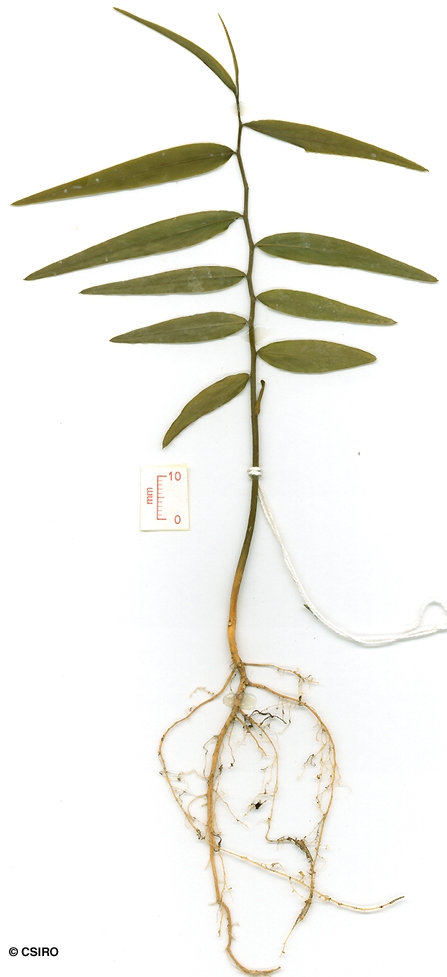Australian Tropical Rainforest Plants - Online edition
Olax pendula L.S.Sm.


Smith, L.S. (1969) Contributions from the Queensland Herbarium 6: 9. Type: Queensland, Fishbone Creek, near Jacky Jacky Air-strip (17.5 miles SSW. of Cape York), Smith 12428 (holotypus, BRI.078531).
Occasionally grows into a small tree but usually flowers and fruits as a shrub 2-3 m tall.
Fine oak grain visible in the twigs. Twigs and branchlets usually pendulous. Leaf blades about 2.5-9 cm long, completely glabrous. Petioles quite short. Lateral veins not easily distinguished on either the upper or the lower surfaces of the leaf blades. Leaf blade very gradually tapering to the apex. Margin of the leaf blade upturned at their junction with the petiole.
Fruit about 8-11 mm long, almost enclosed in the fleshy orange or red enlarged cup-like hypanthium. Embryo very small, about 0.2-0.3 mm long, immersed in the endosperm. Cotyledons about as wide as the radicle.
Cotyledons thick, about 10 x 2 mm. First pair of leaves with oil dots visible along the margin. At the tenth leaf stage: leaf blade narrowly lanceolate, about 50-60 x 7-8 mm, midrib clearly visible but lateral veins difficult to distinguish, petiole very short or absent. Terminal leaf rolled like a very narrow cigar or a fig stipule. Seed germination time 408 days.
Endemic to Australia, occurs in WA, NT and CYP. Altitudinal range from near sea level to 100 m. Grows in open forest and monsoon forest but most frequently found in various vegetation types on sand dunes close to the sea.
May be parasitic on the roots of other plants.





